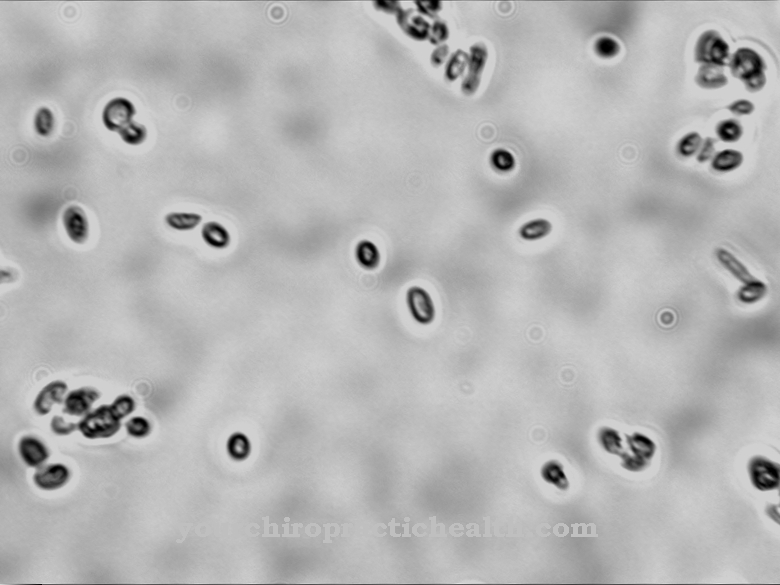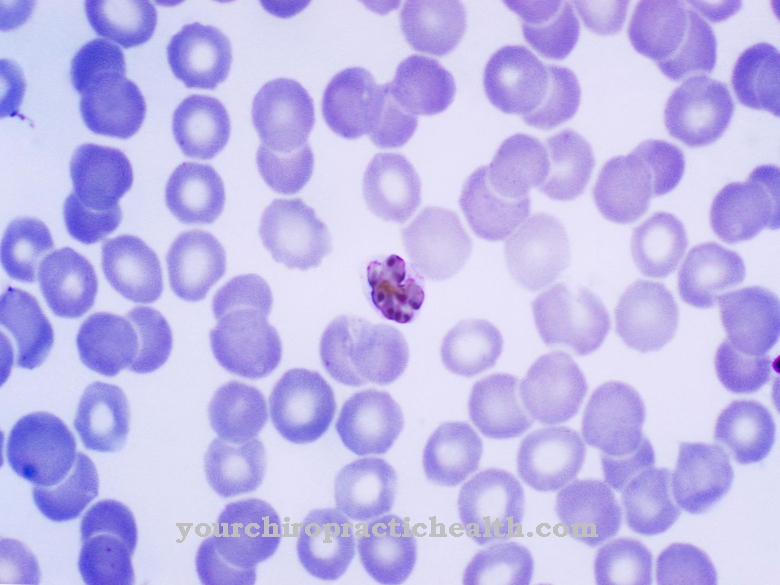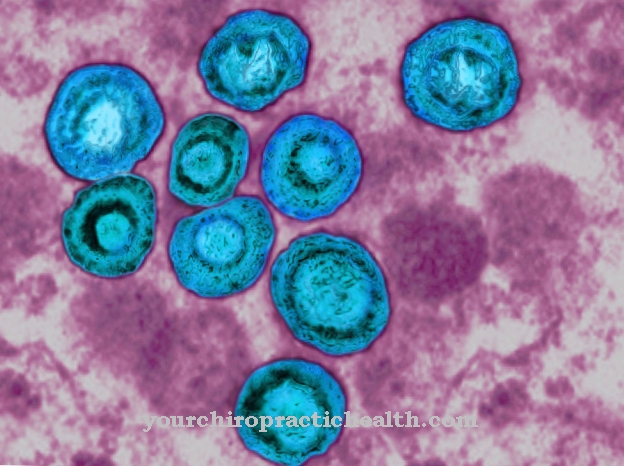Among the microorganisms, the bacteria, take the Pneumococci a separate item. Pneumococci are naturally present in the human organism. Pneumococci cause disease in various circumstances.
What are pneumococci?
The designation Pneumococci is chosen based on their morphological shape. All bacteria that have a roll-like spherical shape under the microscope belong to the so-called cocci. The addition of pneumococci is also applicable because these bacteria mainly settle in the lungs. The term Streptococcus pneumoniae is often used in medical circles.
Within the pneumococci, over 80 different types are known which are pathogenic. A distinctive distinguishing feature of the individual types is possible by comparing the capsule-like envelope of the bacteria under the microscope. The pneumococci penetrate the human organism through various transmission routes.
Meaning & function
Basically are Pneumococci like a multitude of other types of bacteria, they are permanently "at home" in some organ systems of the human body. In a healthy person, a limited number of these are located in the mucous membranes of the nasopharynx and the adjoining airways.
However, if the pneumococci multiply due to a health impairment or a weakening of the immune system, serious illnesses arise which can be life-threatening. The pneumococci are the trigger for the well-known pneumonia, which is a particularly high health risk for small children and debilitated elderly people.
Pneumococci as a subspecies of streptococci are also considered to be pathogenic germs for meningitis, the meningitis, and otitis media, the inflammation of the inner ear. Other diseases that can be caused by pneumococci include damage to the inner lining of the heart, inflammation of the peritoneum and the joints. In this context it is assumed that pneumococci are also important in arthritis.
The appearance of pus is typical of pneumococcal infection. Pneumococci are not dangerous in a healthy person, so they do not inevitably lead to disease. Therefore, the pneumococci are not directly considered to be the cause of disease, because the intact immune system prevents their unhindered reproduction.
Although these bacteria are contained in a nasopharynx swab, there is nothing to worry about. A complete elimination of the pneumococci is therefore not necessary. The transmission of pneumococci from person to person can be demonstrated from both sick and healthy people.
Diseases
If an illness occurs Pneumococci usually the immune competence of the body is disturbed or is insufficient. The bacteria are not sufficiently fought by the immune system and are fought by the body's own defense mechanisms. They can spread unhindered.
This happens quite often in people whose physical constitution is limited. This is the case due to age-specific circumstances or an existing previous illness. A worsening of the immune system through medical treatment such as chemotherapy or surgery may also cause pneumococcal infections.
The time that elapses from the ingestion of the pathogen to the onset of the disease is called incubation in medicine. In contrast to other bacteriocidal diseases, pneumococcal disease is very different. The incubation period depends largely on the constitution of the person.
Newborns and small children as well as older people are at an enormous risk. The immune system in these groups is either insufficiently developed or weakened. Another problem that arises in relation to the targeted treatment of infections caused by pneumococci is often their so-called invasive spread in the body.
In addition, pneumococci lead to localized diseases that are extremely painful and are usually characterized by a recurring course. For example, in adults, pneumococci can contribute to bacteremia or sepsis, which affect the entire body.
Pneumococci are also difficult to deal with because a number of bacterial strains have become insensitive to antibiotics. With special types of pneumococci, there is a habit of getting used to the antibiotic active ingredients, which makes therapy extremely difficult. This resistance is constantly increasing.

























.jpg)


